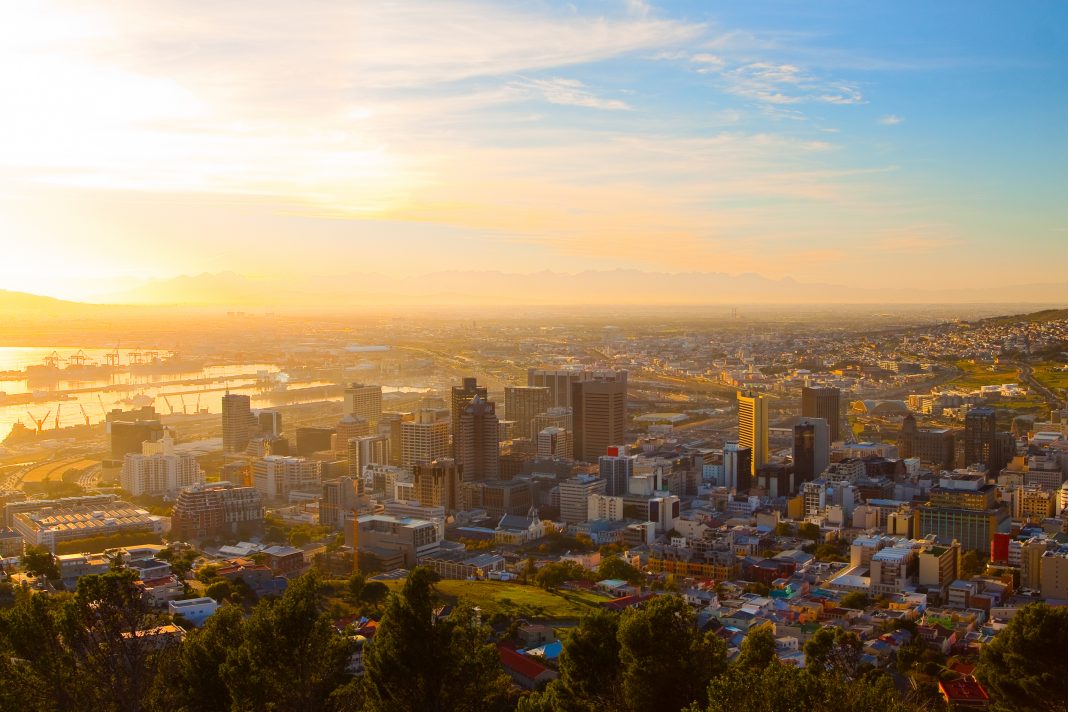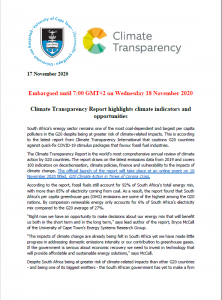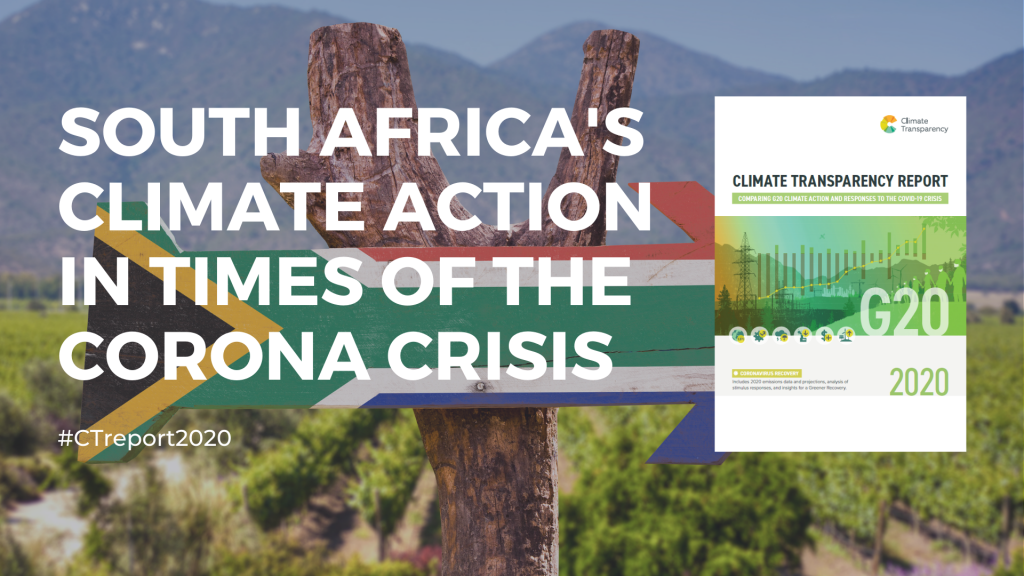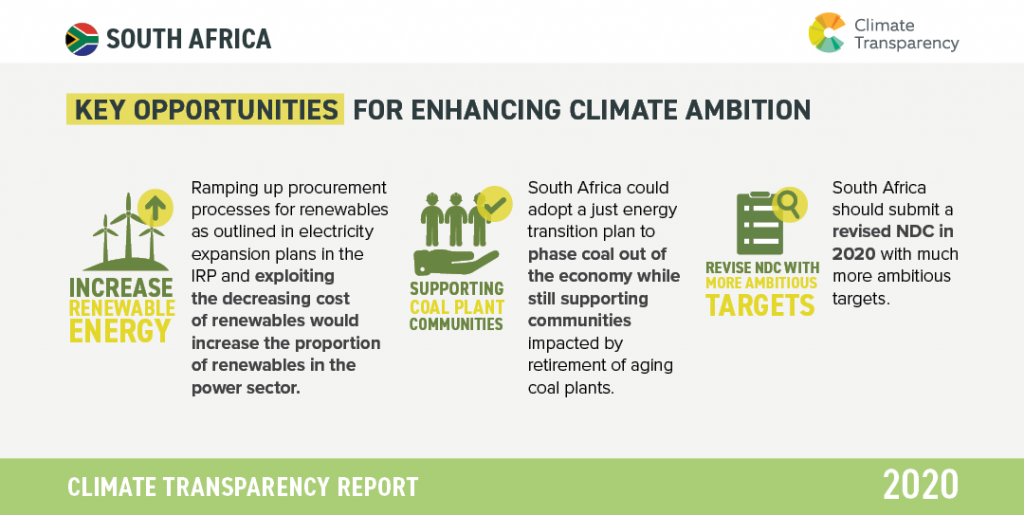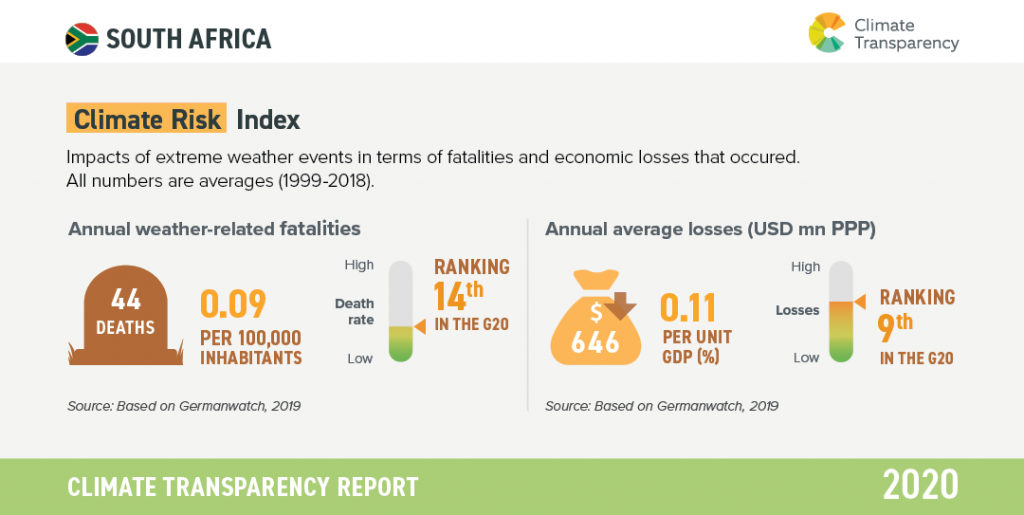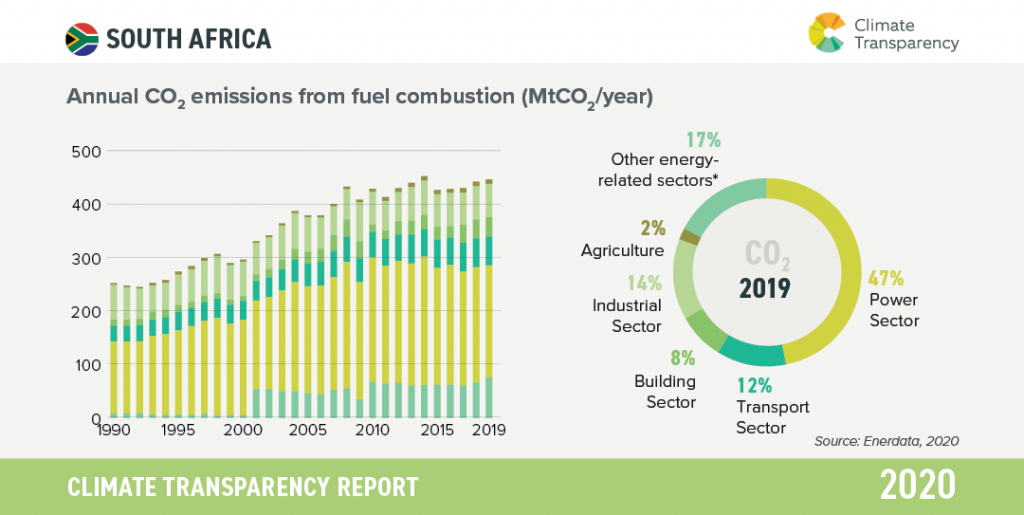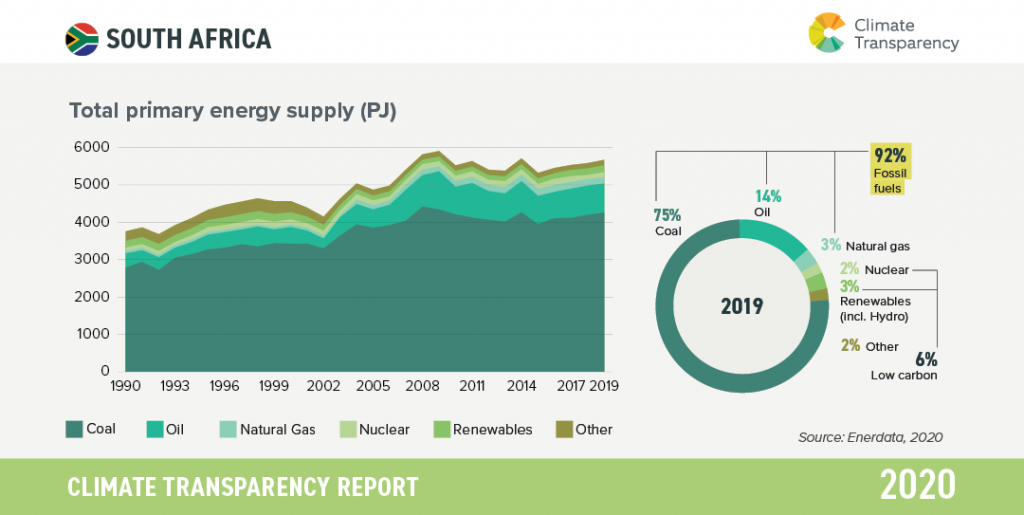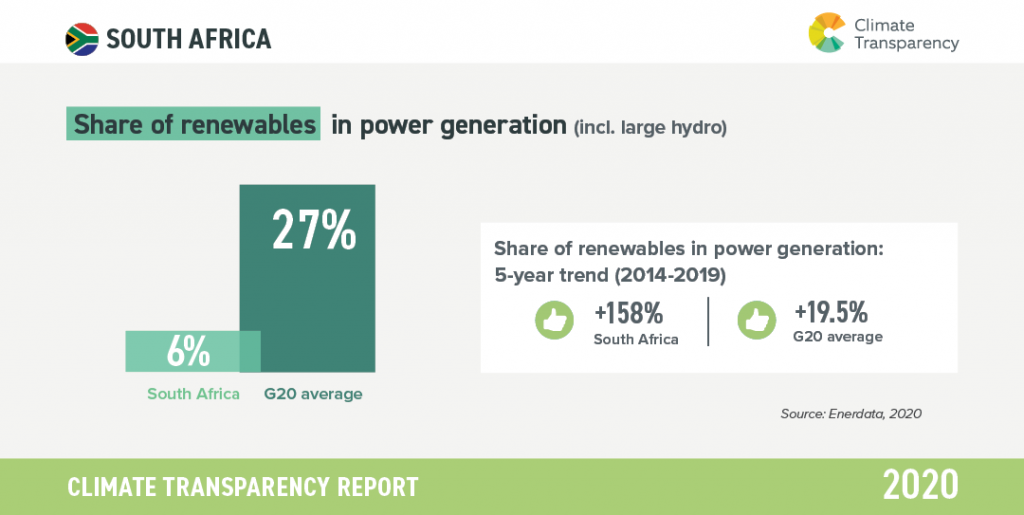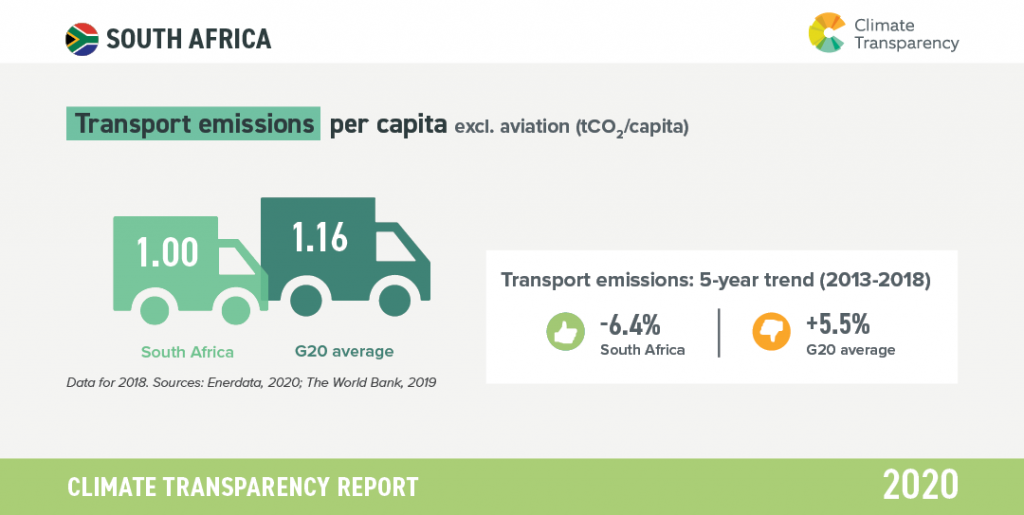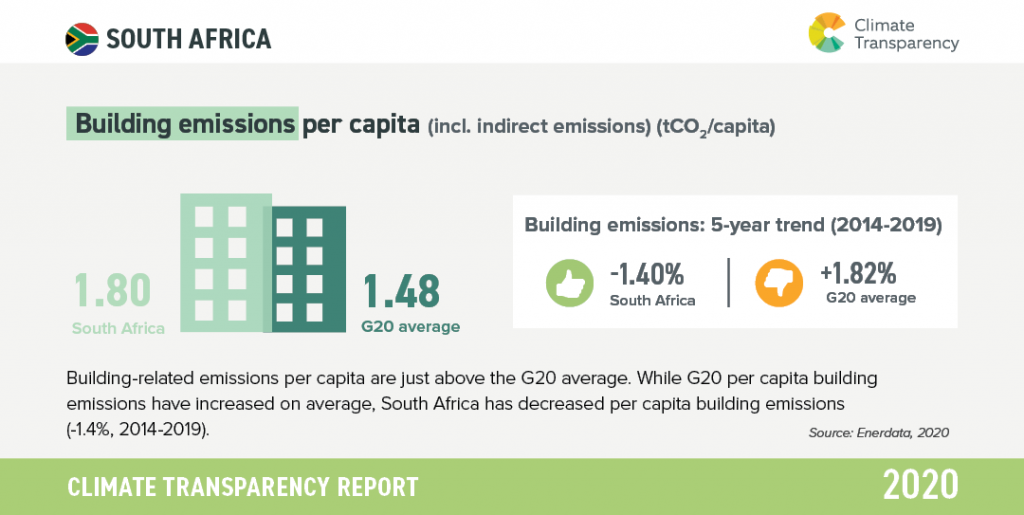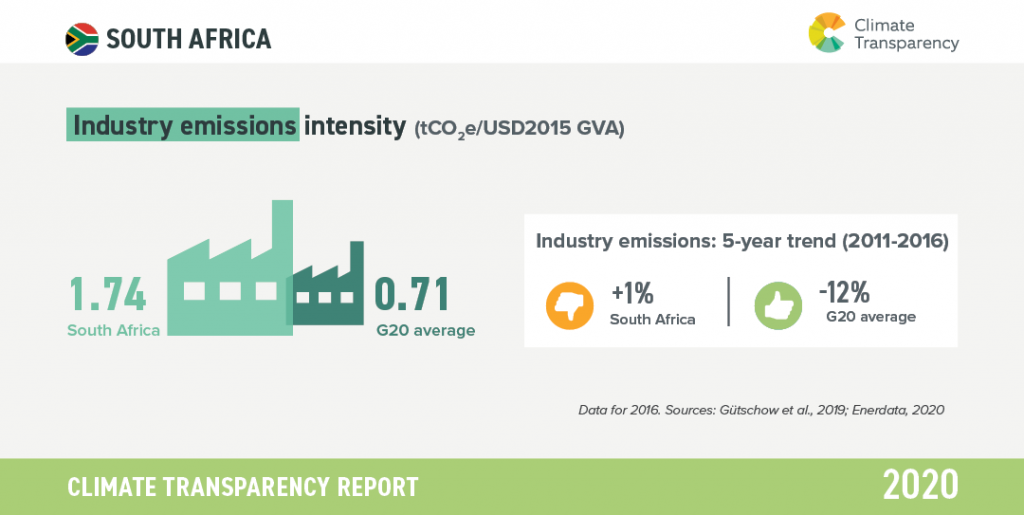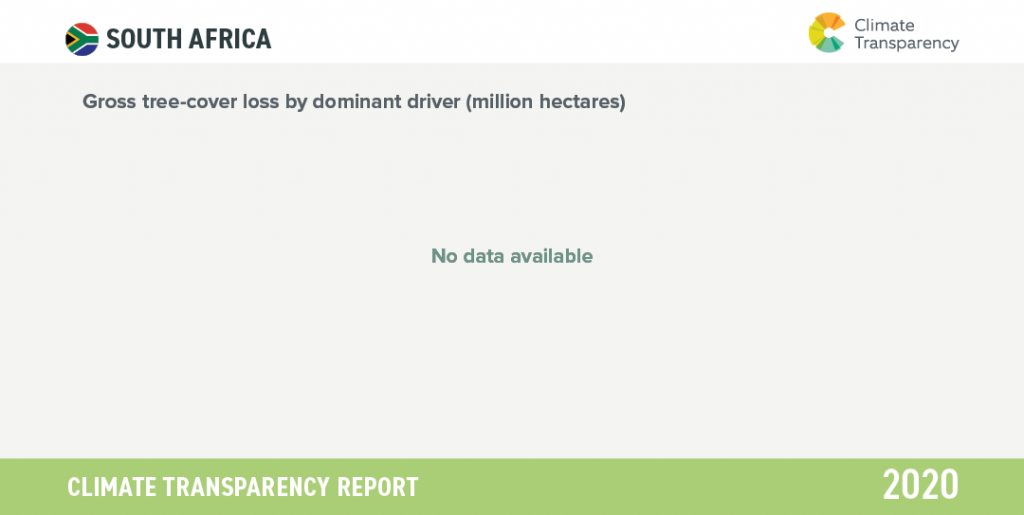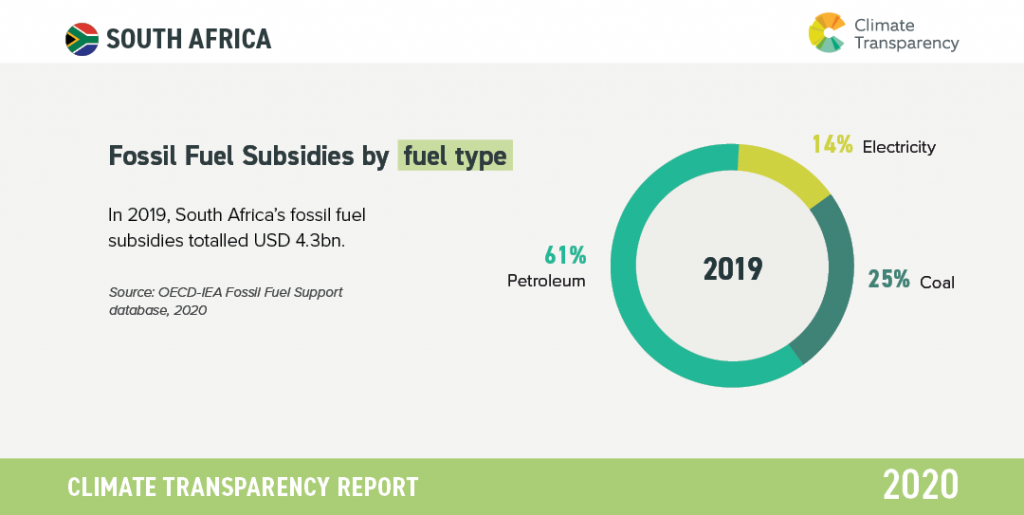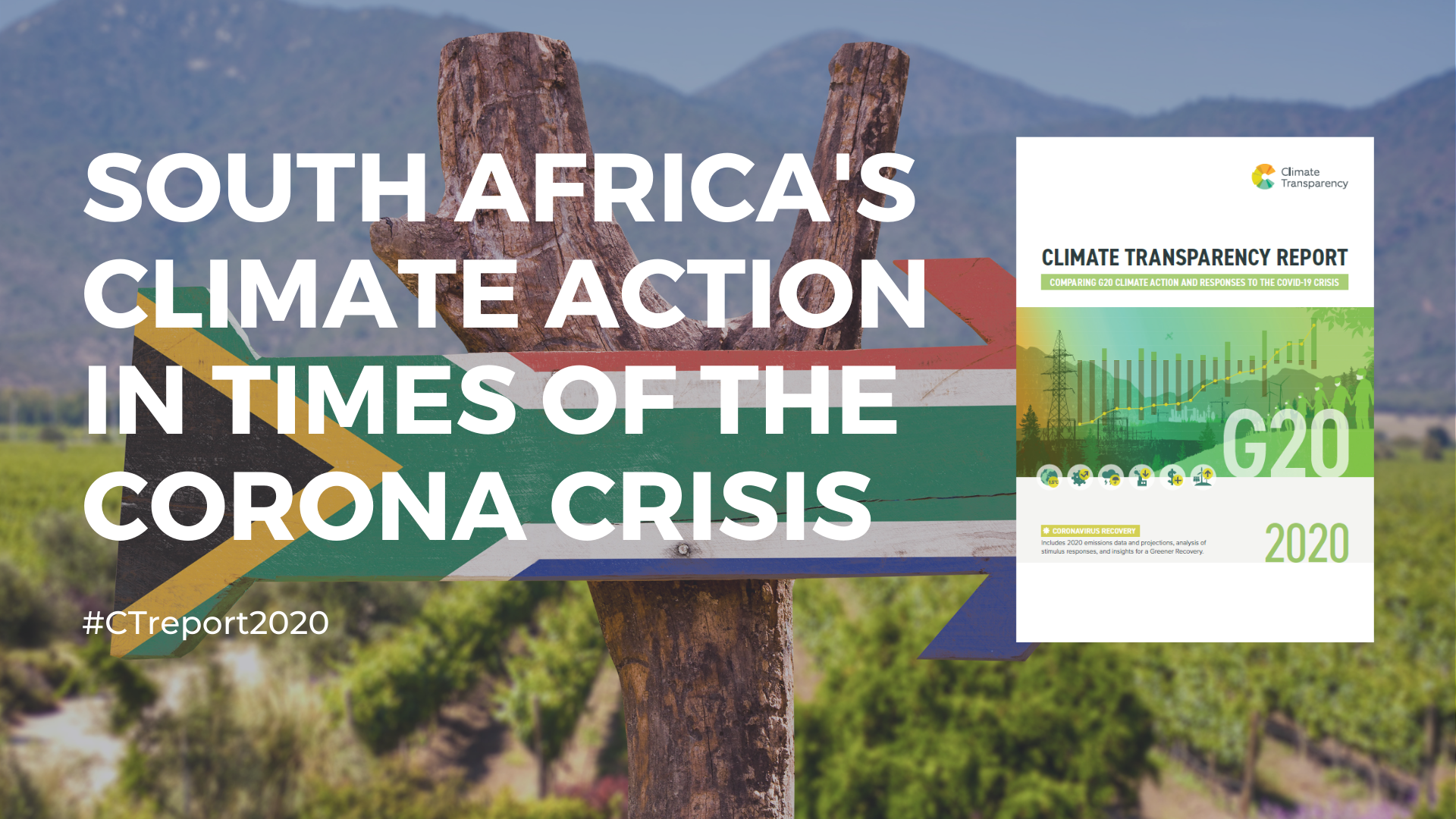The Energy Systems Research Group (ESRG) at the University of Cape Town, the South African Partner of Climate Transparency, organised a national online launch event on the occasion of the Climate Transparency Report’s release, which took place on 25 November 2020.
During the event, the main findings of the South Africa Country Profile as well as the summary report have been presented, followed by presentations and a discussion on challenges related to the decarbonization of transport and iron and steel industry as well as the potential of hydrogen in South Africa.
In the first part, Catlin Bergh from ESRG, concluded that phasing out coal is seen as South Africa’s number main opportunity for climate action. The Climate Transparency Report shows that fossil fuels continue to provide for around 92% of South Africa’s energy mix – which is one of the highest in the G20. The country’s emissions intensity of the power sector also remains at a high level, being almost double that of the G20 average. Communities which are impacted by the retirement of aging coal plants need to be supported in a just transition. Furthermore, the report cautions G20 countries against COVID-19 stimulus packages that favour fossil fuel industries.
The second presentation, provided by Bruno Merven, has been devoted to economic and energy impacts in South Africa in various scenarios. The research found that:
- Shifting away from coal to renewable energy does not negatively affect economic development;
- Protecting the coal-mining sector does not save jobs overall for South Africa;
- Investment in renewable power is the least-cost option for South Africa;
- Artificially constraining the inclusion of solar PV and wind in the long term increases the electricity price and negatively affects economic development.
The presentation by Fadiel Ahjum showcased the findings from the 2019 Climate Transparency policy paper on low-carbon transport future for South Africa. The main finding from the paper was the increase in electric vehicle transport from 2030 to 2050 required an approximate 100 TWh (20%) in national electricity demand. In a low-carbon pathway this would require an additional 40-45 GW diversified renewable energy portfolio in South Africa to meet this increase for a zero emissions goal for road transport by 2050. For a low.carbon transport future in South Africa, the infrastructure changes would have to be made: increase freight from road to rail, increase public transport and prioritise transit oriented design for eco-mobility.
Lastly, Bryce McCall from ERSG, argued that the alternative production method of using hydrogen from renewables based on electrolysis could be cost competitive with the traditional coal-based iron production methods by 2030. This could in the long-term mean for a transition in of the iron and steel sector in South Africa to the hydrogen economy. Owing to South Africa’s abundant renewables resources, this production process would be an advantage on the international iron commodities markets – one which would need to be decarbonised before 2050. South Africa would benefit in export revenue earnings from exporting this ‘green’ iron to a market like Europe.
The event has been closed with a discussion with around 40 stakeholders on the challenges related to decarbonising the transport, steel and iron sectors as well as the potential of hydrogen.


